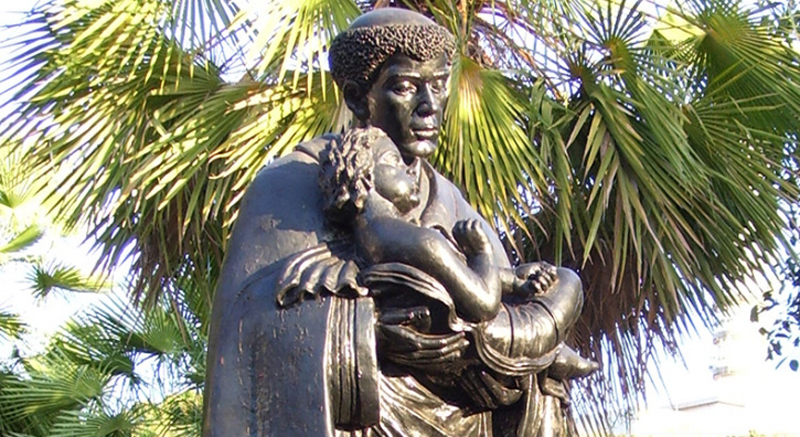(1526-1589)
St Benedict the Black was the son of Negro slaves who were taken from Africa to San Fratello, Sicily, where they were converted to Christianity.
They lived such exemplary lives and fulfilled their duties so thoroughly that their owner, in appreciation, granted freedom to their 18-year-old son Benedict. He continued to work as a day laborer, generously sharing his small wages with the poor and spending his free time in caring for the sick. Because of his lowly origins, St. Benedict the Moor was often the object of ridicule, which he bore so patiently and cheerfully that he was called even during his youth, “The Holy Black.”
At age 23, Benedict sold his meager possessions and gave the proceeds to the poor so he could then join the Franciscan monastic group of San Fratello. He later moved to Palermo where he worked for many years in the kitchen as a lay brother at the Friary of St. Mary of Jesus.
When his director died, he was appointed guardian of the friary, even though he was illiterate. He so pleased his order that after only one term he was chosen as master of the novices. He seemed to be endowed with a natural knowledge of scriptures and theology that astounded even the learned men with whom he came in contact. He was sought for council from novices and was known for his concern for all people regardless of their class.
Benedict became somewhat of a beacon to the people of Sicily who flocked to his monastery. The poor requested alms, the sick searched for miracles and people of all ranks sought advice or prayers. They used to say his face often was seen to shine with a celestial light, especially when he was praying in the chapel, and that angels assisted him in the kitchen making food seem to multiply miraculously under his hands.
In truth, Benedict probably would have preferred to be left alone in contemplation, but he never refused to see anyone. Toward the end of his life, he willingly returned to the humble duties of the kitchen when he was relieved of all offices. He died after a short illness at the age of 63, at the very hour he had predicted, and was buried with great solemnity in the common vault behind the sacristy of the church.
Three years after the saint’s death his body was exhumed and found perfectly preserved. Then, in 1611, King Phillip III of Spain assumed the expense of providing in the same church, a new shrine situated on the left side of the altar of S. Maria de Gesu, to which the saint’s incorrupt remains were transferred with great solemnity. The sacred relic is on view for public veneration. The face of the saint was covered some time ago with a thin wax mask.
God blessed the virtues of the former slave with the gift of incorruptibility, which blessing has endured for almost four hundred years. St. Benedict the Black has been proclaimed the “Patron of all Negro Missions in North America.”
Adapted by A.J. Valentini from: St. Benedict the Moor. (n.d.). Roman Catholic Saints. Retrieved March 30, 2021, from https://www.roman-catholic-saints.com/st-benedict-the-moor.html
